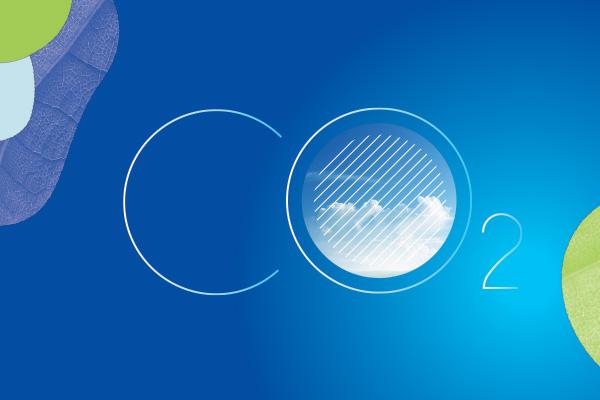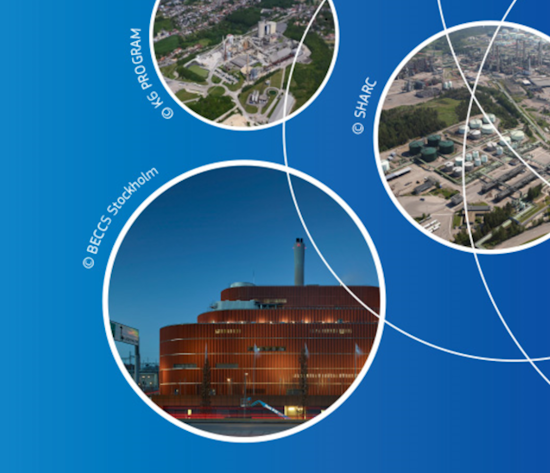Carbon capture and storage (CCS) can be applied on industrial installations, such as cement or steel plants, and in power plants.
It can also be used to produce low-carbon hydrogen in the first stage of implementation of the EU Hydrogen Strategy. When combined with biogenic sources of CO2, such as sustainable biomass, CCS can generate negative emissions.
Carbon capture and utilisation (CCU) technologies allow reusing captured carbon, increasing its circularity and potentially reducing its emissions to the atmosphere.
Industrial carbon management strategy
The adoption of the European Green Deal, the European Climate Law and the subsequent proposals to increase energy and climate targets for 2030 have made carbon management technologies an important part of the EU decarbonisation effort.
The Commission already provides a regulatory framework for the safe transport and storage of CO2 through Directive 2009/31/EC on the geological storage of carbon dioxide. As regards CCU, the technology is regulated in Directive (EU) 2018/2001 on the promotion of the use of energy from renewable sources, which promotes renewable fuels of non-biological origin, and among others, fuels produced from captured CO2.
In December 2021, the Commission adopted a Communication on Sustainable Carbon Cycles (COM/2021/800) that aims to establish sustainable and climate-resilient carbon cycles. It lists key actions to support industrial capture, use and storage of CO2, including the assessment of cross-border CO2 infrastructure deployment needs at EU, regional and national levels until 2030 and beyond.
On 30 November 2022, the European Commission adopted a proposal (COM/2022/672) for an EU-wide voluntary framework to certify carbon removals. It will boost innovative industrial carbon removal technologies, such as bioenergy with carbon capture and storage (BioCCS) or direct air carbon capture and storage (DACCS). Both these technologies can capture carbon and store it permanently in geological formations.
In November 2023, the Commission published a report providing an analysis of the response received from stakeholders and citizens to the open public consultation on the Industrial Carbon Management Strategy, which closed on 31 August 2023.

The Industrial Carbon Management strategy (COM/2024/62) was published by the Commission on 6 February 2024.
It presents a comprehensive approach for the EU to scale up carbon management.
The strategy identifies a set of actions to be taken, at EU and national level, to establish a single market for CO2 in Europe and to create a more attractive environment for investments in industrial carbon management technologies.
For more facts, consult the fact sheet ‘Industrial carbon management: capturing, storing and using CO2 to reach our climate goals'.
Timeline for the strategy
- 6 February 2024Adoption of the Communication on industrial carbon management
- 27-28 November 2023CCUS Forum plenary session
- 6 October 2023Event presenting result of the public consultation
- 8 June 2023Call for evidence and public consultation
- 30 November 2022Adoption of a proposal for a regulation establishing a Union certification framework for carbon removals (COM/2022/672)
- 15 December 2021Communication on sustainable carbon cycles (COM/2021/800)
EU support
The Commission actively supports industrial carbon management projects.
Innovation fund
As of February 2024, the Innovation Fund supports 26 industrial carbon management projects that have successfully applied to one of the small or large-scale calls organised since 2020, totaling more than €3.3 billion. Selected applicants currently benefiting from Innovation Fund grants can be consulted on the Commission's website.
Horizon EU
The Commission also supports research, development and innovation for industrial carbon management technologies through Horizon Europe and stakeholder engagement, such as the Strategic Energy Technology Plan Working Group on CCUS and its associated European Technology and Innovation Platform ‘Zero Emissions Platform’.
Under Horizon Europe Cluster 5 (Climate, Energy and Mobility), the Commission supports developing new and/or improving existing CO2 capture technologies. A dedicated project CCUS ZEN supports the integration of CCS and CCU in hubs and clusters, including knowledge-sharing activities.
Under Horizon Europe Cluster 4 (Digital, Industry and Space), several calls address carbon capture and utilisation in topics related to industrial symbiosis and Hubs for Circularity.
State aid
The Commission also enables EU countries to support the carbon capture and storage and carbon capture and utilisation technology through state aid under certain conditions specified in its Guidelines on State aid for climate, environmental protection and energy 2022.
CO2 transport infrastructure
CO2 transport infrastructure projects are within the scope of the Trans-European Networks for Energy. They can apply to become projects of common interest (PCIs) and subsequently apply for support under the Connecting Europe Facility (CEF). Every 2 years, the Commission adopts an EU list of PCIs and since 2023 also of projects of mutual interest (PMIs).
In November 2021, the Commission published the 5th PCI list from the Trans-European Networks for Energy Regulation (TEN-E Regulation). This list includes 6 CO2 trans-European infrastructure projects focusing on the development of CO2 hubs.
As announced in December 2023, in the last call for funding proposals open to projects from the 5th PCI list of November 2021, 5 CO2 networks projects were selected for funding under CEF.
In November 2023, the Commission adopted a new PCI list based on the revised TEN-E Regulation, which also includes PMIs between EU and non-EU countries. This list includes 14 CO2 network projects across Europe. The first PCI/PMI list is expected to be approved by the Council and the European Parliament at the end of April 2024.
The Commission's Joint Research Centre (JRC) published in February 2024 a study on the future CO2 transport network for Europe and related investment needs.
CCUS Forum

The CCUS Forum is a robust stakeholder consultation platform established by the Commission in 2021.
It aims to bring together representatives of the EU institutions, EU and third countries, NGOs, business leaders and academia to facilitate the deployment of CCUS technologies.
CCUS projects network
The Commission supports the CCUS Project Network (2018-2023), which facilitates knowledge sharing among major industrial projects underway across Europe. The network is part of CCUS ZEN since October 2022.
Related links
- Commission Communication on Industrial carbon management (COM/2024/62) Press release | Factsheet
- Press material 30/11/2022 on certification of carbon removal
- EU strategy on energy system integration
- Proposal for a Regulation establishing a certification framework for carbon removals (COM/2022/672)
- Renewable Energy Directive (2018/2001)
- Amendment to the Renewable Energy Directive to implement the ambition of the new 2030 climate target (COM/2021/557)
- Carbon Capture and Storage Directive (2009/31/EC)
- Directive to improve and extend the greenhouse gas emission allowance trading scheme (2009/29/EC)
- Consolidated version of Directive 2003/87/EC of the European Parliament and of the Council establishing a scheme for greenhouse gas emission allowance trading within the Community and amending Council Directive 96/61/EC
- Proposal for a Regulation on guidelines for trans-European energy infrastructure and repealing Regulation (EU/347/2013)
- Carbon capture, use and storage (DG Climate Action)
